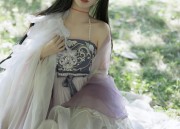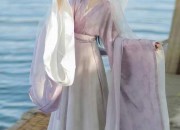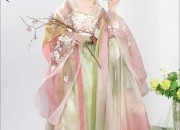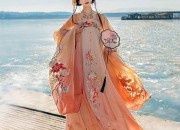The Return of the Bride in a Cheongsam:The Art of the Hui Men Fu
In The vibrant tapestry of Chinese wedding traditions, the "hui men fu" or "回门服" holds a special place. This traditional attire, worn by the newly married bride on her first visit to her parents' home after the wedding, is a symbol of respect and a testament to cultural continuity. The essence of this article is to delve into the significance of the hui men fu, particularly the旗袍(cheongsam)variant, and explore its historical roots and modern evolution.

The origins of the hui men fu can be traced back to ancient times, when it was customary for newly married daughters to visit their parents' home with their husbands soon after the wedding ceremony. This visit was not only a gesture of respect to the parents but also an occasion for the community to gather and celebrate the union of two families. The bride's attire during this visit was an important aspect as it reflected her status within her new family and her respect for her parents' culture and traditions.
The choice of wearing a cheongsam for the hui men fu is not just a fashion statement but a deep-rooted cultural expression. Cheongsam, synonymous with Chinese traditional women's attire, embodies elegance and grace. Its intricate designs and vibrant colors add to its beauty, making it an ideal choice for a traditional wedding. The cheongsam worn by the bride during the hui men fu is often tailored to reflect her personality and style while staying true to the traditional essence of the garment.
The significance of this attire lies in its symbolism. The cheongsam represents continuity of culture and tradition, passed down through generations. It is a symbol of the union between the two families, as well as a representation of the bride's role as a wife within her new family. The intricate details and patterns on the cheongsam further enhance its symbolic value, often carrying meanings related to good luck, prosperity, and harmony.
In modern times, while many wedding customs have evolved, the importance of the hui men fu remains unchanged. Modern brides often opt for contemporary designs that blend traditional cheongsam elements with modern fashion trends. This fusion not only allows them to stay true to their cultural roots but also adds a contemporary touch to their wedding attire. The use of vibrant colors, intricate patterns, and modern cuts create a perfect blend of old and new, reflecting the modern bride's personality and style.
Moreover, with changing times, the role of social media and online communities has become significant in promoting and preserving cultural traditions. The online community has played a crucial role in keeping these traditions alive by sharing information about traditional wedding customs and attire like the hui men fu. This has not only helped in preserving these traditions but also enabled modern brides to explore different options and styles that are available within this traditional attire.
In conclusion, the hui men fu, especially the cheongsam variant, is not just a piece of clothing but a symbol of cultural continuity and tradition. It represents the union between two families and reflects the pride and honor of the newly married couple. The evolution of this attire in modern times reflects the changing times and evolving fashion trends but with a deep-rooted cultural significance that remains unchanged.
Related Recommendations
-

The Revival of Hanfu:The Allure of the Cross-Over Collar on Traditional Hanfu Shirts
-

The Enchanting World of Lingyin Hanfu The Traditional Chinese Elegance
-

The Revival of Hanfu Culture:The Role of Archery as a Symbolic Accessory
-

The Evolution of Hanfu Accessories:The Significance of Waist Belts in Traditional Chinese Costume


